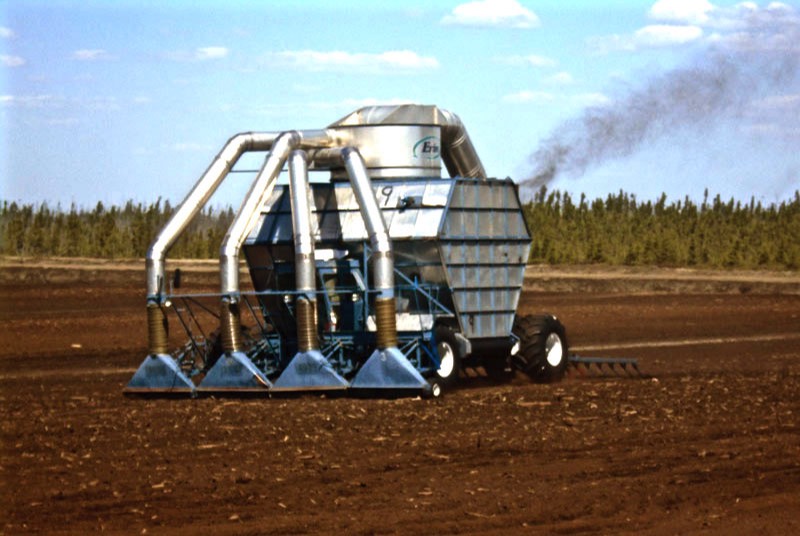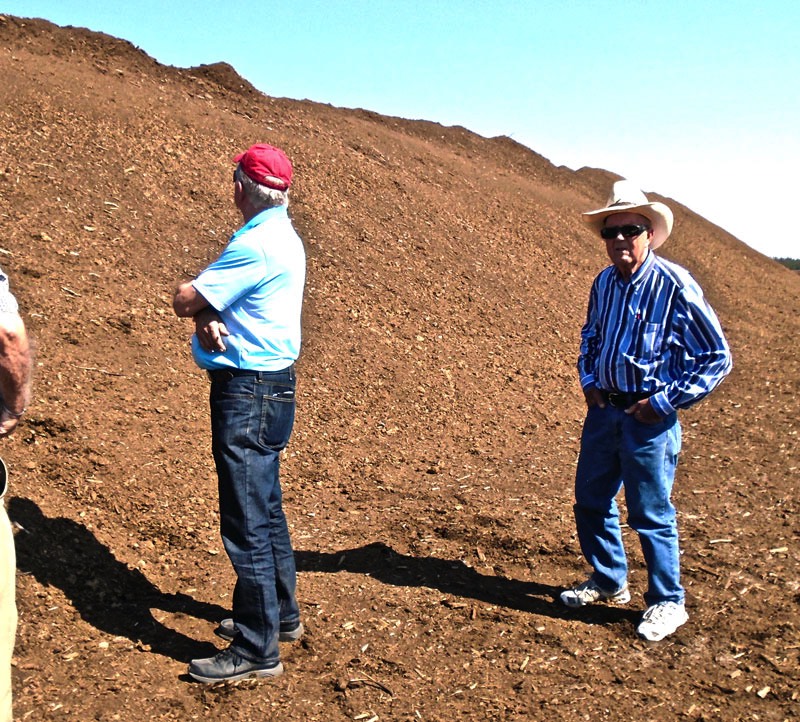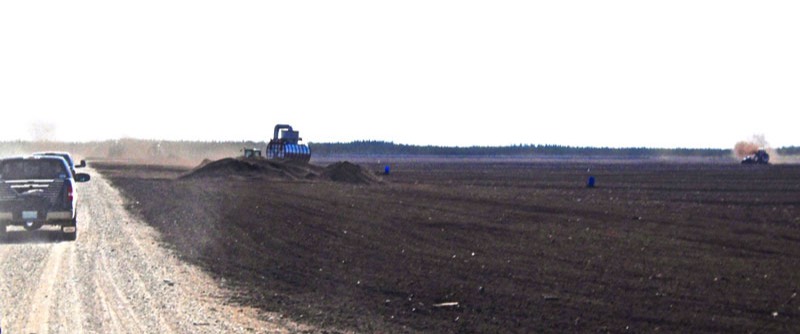
.
Premier Horticulture, Carrot River
.
June 1, 2015
Carrot River
by: Timothy W. Shire
Carrot River
by: Timothy W. Shire
.

Friday May 23 our Wheatland Sam group visited the site where is harvesting peat moss north of Carrot River.
The company will not consider developing a bog unless it is more than four feet deep in moss. When they have finished removing the product, which takes years to do, they must by regulation, leave a foot of the stuff on the plot then they re-flood it and return it to its natural state.
.

.

Using giant vacuum cleaners, like the one on the right, or the self propelled one at the top of the page, about two inches of fluff is sucked up and then piled in the mounds along the roadways, like the one above. The harvesting crews work from April until the snow arrives, sucking up the moss seven days a week from sun up until sundown. The mounds of product are left in place for the processing plant to pick up and bale the peat for sale.
Twenty two pallets of peat bales are packed onto “B” trains and shipped to market. Almost all of the Carrot River production is sold in the United States with very little competition. The peat is of high quality and very much in demand although, sales are higher when the loonies is lower in value. For some time “Moneys” mushrooms in California was using a “B” train of Carrot River product a day. However, the poorer economic climate in the United States since 2008 has seen the demand for mushrooms decline, simply because it is luxury product.
With the present bogs now in production and ones being developed in the Hudson Bay area, the company has about 100 years of production available.
For more details about the nature of the peat moss business, look over this PDF document by Janet MacKenzie written in 2003 about the background to the industry.
.

.